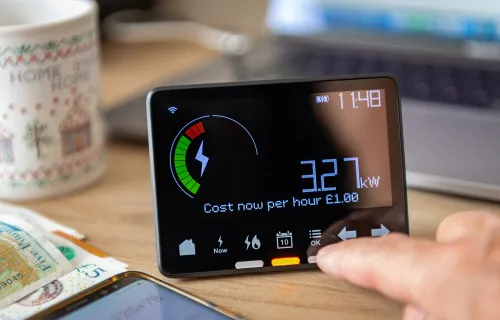Looking at the opportunities 5G will bring to entertainment, manufacturing industry and utilities, and how we must collaborate to make it happen.
We’ve already heard this week about how fibre and connectivity is critical to the rollout of 5G, but what can we do with 5G as and when it’s more widely deployed over the coming few years? Just as 4G was the driver for a step change in higher data rates which led to an explosion of apps and new business models for just-in-time services like Uber, 5G has the ability to enable a new generation of services. 5G will first bring massive capacity to the existing network. It will, in time, enable us to solve some of the challenges being faced by businesses and society as a whole.
The increased capacity of 5G, resulting from new spectrum and radio approaches, will increase bandwidth to around 100 times that of 4G. This increased capacity will enable real time video streaming at data rates capable of supporting Virtual Reality and Augmented Reality, which in turn open up new possibilities in a range of industries. Let’s look at a few - entertainment, industry 4.0 and utilities.
Entertainment is already being transformed through immersive gaming experiences combined with live footage - for example BT Sport’s use of VR to place viewers in the centre of a football game rather than sat among the spectators. This could be mapped to pretty much any sporting scenario and would completely change the viewer’s experience from a sofa-based watcher to a fully immersed experiencer, whilst adding branding customised for the individual viewer. The UK Government injecting £30m to the 5G Create initiative will help to kick-start these changes, as well as identifying new use cases in the creative industries.
Industry 4.0 is already taking shape. Factories are already highly automated, but often constrained by current robotic technology which is not flexible enough for today’s user expectations. Consumers expect customisation, and factories need to respond and reconfigure instantly, so every item off a production line can be different and tailored to a user’s requirements, while keeping production costs low. This can only be achieved by a centralised control system which is able to drive and reconfigure production line changes. To respond rapidly and reliably needs high quality connectivity both within the factory and out to the wider supply chain. Pioneers in this space have found limitations in current communications networks which have led to new developments such as QUIC.
Utilities are under a lot of pressure. As population density increases, existing utility infrastructure becomes stressed. More people need more water, electricity and gas to be delivered, but at the same time renewable energy and local generation are now a significant part of the energy mix, and the water industry faces significant challenges due to climate change. Add growth in Electric Vehicles and the pressure increases further as loads on the local electricity network increase beyond design capacity. Part of the solution is finer grain control, taking data from sensors, local generating devices, the distribution network and the consumers of energy. 5G’s future promises of low latency and dedicated network slices will help to deliver this. The challenge is that investment plans are funded from regulated price rises looking 5 years ahead, which is a long time technology!
Another hot topic is shared versus dedicated networks, complicated further by the option of Neutral Hosts and network slices, which make shared networks appear as dedicated networks. Shared networks are usually lower cost, but potentially higher risk as the competition and the baddies also share them! Dedicated networks have advantages where the data being transferred is sensitive or critical to the operation of the energy infrastructure, true in the Industry 4.0 and Utilities use cases above. There are calls for dedicated spectrum for specific services, but spectrum is a scarce and highly valuable resource, so a clear business case is needed to justify it. The promise of 5G network slicing (a couple of years away still) will enable scarce resources to be used more efficiently.
When these shared and dedicated networks start interacting, alongside the introduction of edge network processing, and shared and dedicated spectrum needing to be managed, deployment and data management issues become significant.
Perhaps the biggest change that 5G brings is the need to collaborate across boundaries. The use cases above are just the tip of the iceberg, and it’s only by industry verticals working closer with communication providers that we will see the full benefits of 5G delivered. This is a significant change, as it needs a much more open discussion of value chains as well as joined up government incentives and approaches. Without such collaboration 5G may be unable to deliver the full range of benefits outlined above. CGI is progressing this within Teck UK’s 5G Ecosystem Working Group as a convening body to bring the right people together to create clarity and drive progress, enabling us to make the most of 5G technology in the UK.
This blog formed part of techUK’s ‘Delivering Connectivity for All campaign week, which began on Monday 9 March 2020. Featuring guest blogs from across the telecoms sector, the campaign explored the opportunities and barriers of connectivity throughout the UK, how connectivity can provide support to various sectors and what needs to be done to ensure all can benefit from connectivity.





